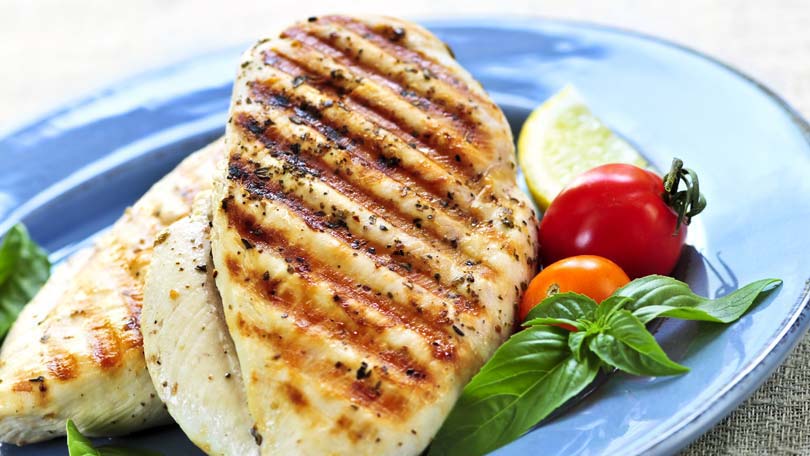
Chicken is one of the world’s most versatile foods. Everyone has their own favorite chicken recipe – from the good old Southern-fried variety to more sophisticated creations like Chicken Cordon Bleu or Coq Au Vin.
Nutritionally, chicken also has a good reputation, especially versus red meat. Chicken is naturally low in fat and, overall, it’s a healthy food.
The chicken breast is, by far, one of the most widely-used portions of the chicken and it’s the part of the chicken that’s lowest in fat. It can be found with bone or boneless, with skin or without. Which you choose depends on a number of different factors, including the recipe you wish to create or how many calories you wish to avoid.
Skin vs. Skinless
While some individuals would never even consider removing that tasty skin from the chicken, many health conscious individuals recognize the importance of not including chicken skin in their diet. Some recipes really do necessitate leaving the skin on – like fried chicken. Others, however, can be easily accomplished sans skin.
What is the nutritional difference between a chicken breast with skin and one without? Where fat is concerned, an average 3 oz. chicken breast without skin contains 3grams of fat and about 140 calories. The same size piece of chicken breast with skin still on comes in at a whopping 8 grams of fat and just under 200 calories. Quite a difference!
Bone vs. Boneless
Many amateur chefs agonize as to whether to choose chicken breasts with bones or those without. The fact is that the method of cooking will probably determine which is best for your recipe. Chicken breasts that will be sautéed in a shallow pan on top of the stove should be of the boneless variety. In your grocery store, these will be labeled “boneless chicken breasts,” “chicken cutlets,” or “chicken tenders.” These can be sautéed whole or cut in strips or chunks for recipes like stir-fry or salads.
Chicken dishes that call for chicken to be cooked in the oven usually work best with boned chicken. You can buy this type of chicken breast with skin or without skin. Leaving the skin on while roasting will result in a juicier meat, but if you prefer not to eat the skin, you can discard it before serving. Remember, you can also save the bones to make chicken soup which – according to some – will cure any common ailment!
Fresh vs. Frozen
In recent years, the desire to provide the healthiest possible food for one’s family has prompted consumers to turn to fresh chicken rather than frozen. Much the same as turkey, some believe that the fresher, the better, and shy away from frozen chicken.
In reality, one may not necessarily be better than the other. The term “fresh chicken” refers to chicken that has never been stored below 26 degrees Fahrenheit (about 3 degrees Celsius). Any raw poultry that has been held at 0 degrees F or below must be labeled “frozen” or “previously frozen.” Anything in between requires no label.
The biggest difference between fresh and frozen is probably the taste. Because many fresh chickens are also of the organic or free-range variety, they tend to have a different taste than normal barn-raised chickens. If you’re accustomed to eating frozen, you’ll probably notice the difference.
Secondly, fresh chicken needs to be consumed more quickly than the frozen type. It should be kept in the refrigerator for no more than 2 or 3 days before it’s eaten. That makes it ideal if you purchase it on the day you intend to use it, but not so convenient if you’re not sure when you’re going to prepare it.
Nutrition
The inclusion of chicken in a healthy diet is essential. As was previously mentioned, chicken is naturally low in fat. Any fat found in chicken is of the unsaturated variety, which helps keep cholesterol low. Chicken also provides a large portion of one’s daily requirements for protein.
When choosing chicken as an entrée at a restaurant, be sure to pay attention to how it is prepared. If you’re counting calories, look for words like roasted or broasted rather than fried. If the chicken is sautéed, you may want to inquire as to what kind of fat is used in the sautéing process, such as butter, vegetable oil, or olive oil.
